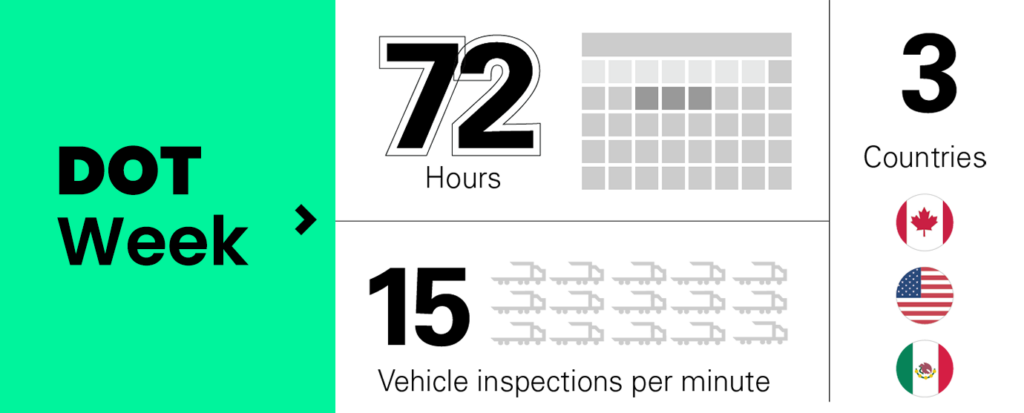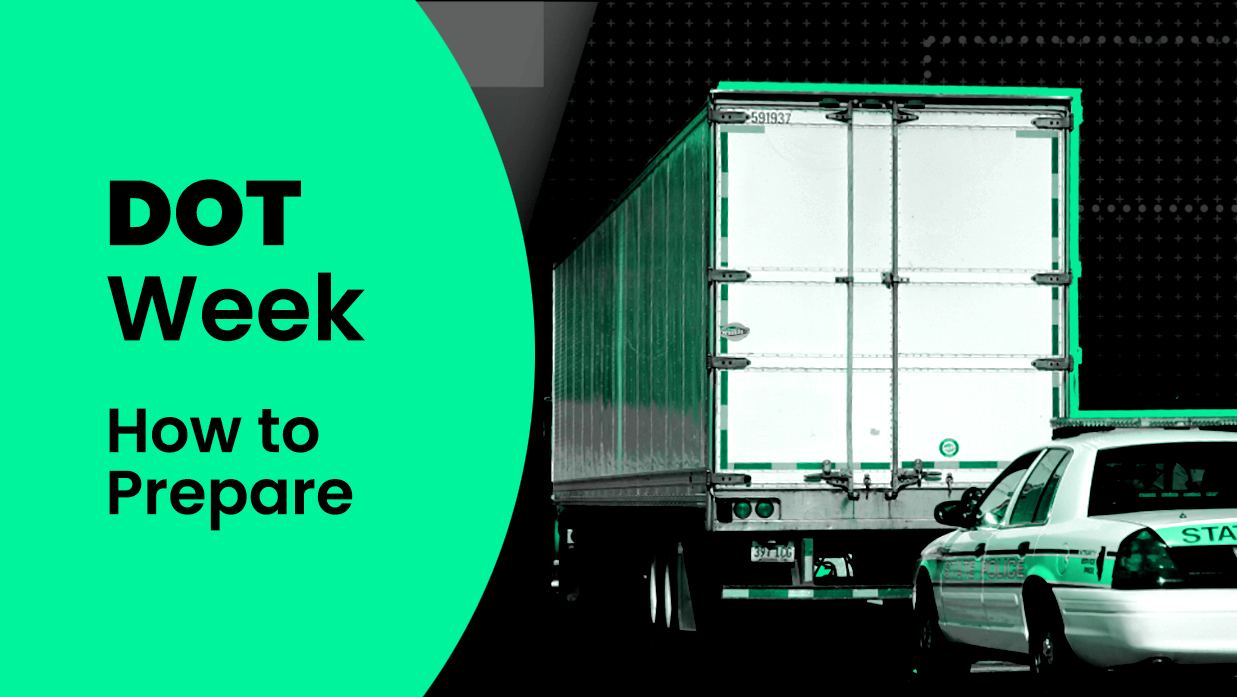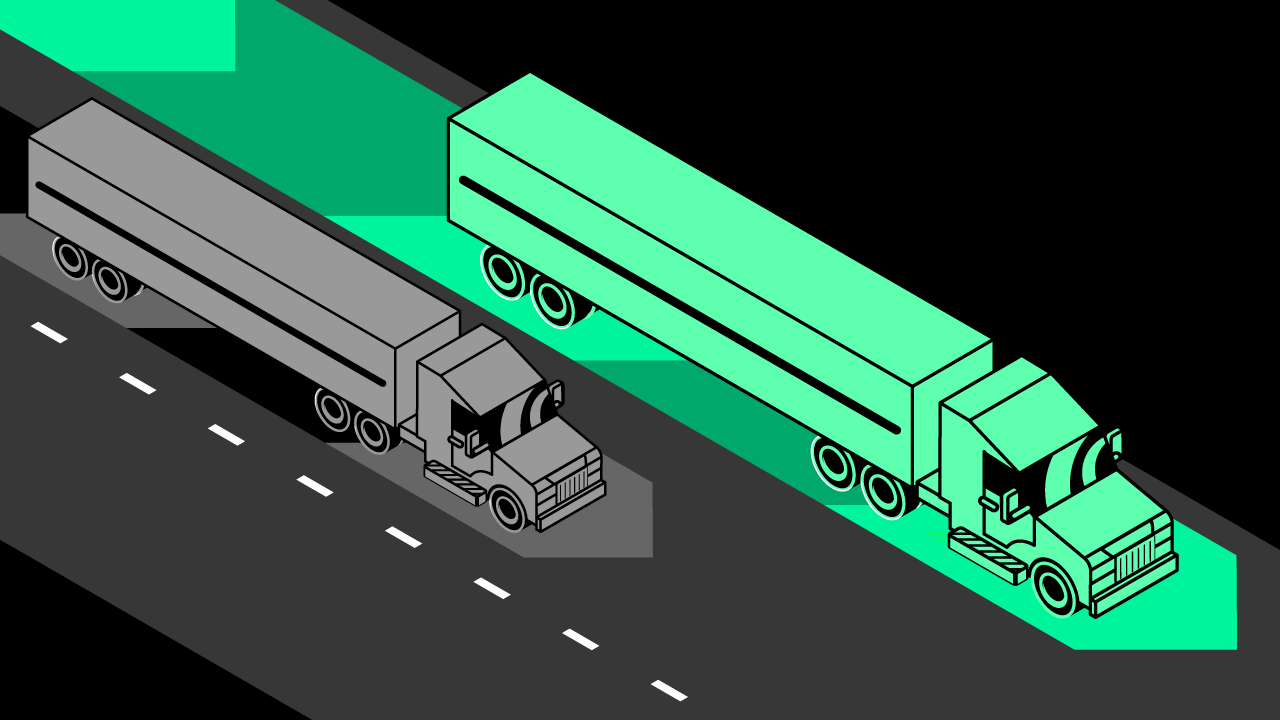From Tuesday, May 13th to Thursday, May 15th, 2025, the Commercial Vehicle Safety Alliance (CVSA) International Roadcheck — aka DOT Week or DOT Blitz — hits North American highways.
With capacity beginning to tighten up in the truckload market, you should keep an eye on this annual disruption and plan for some spot rate volatility.
Below is everything you need to know about 2025’s annual inspection blitz, and a few actionable tips you can take to prepare your business, whether you’re a shipper or a carrier.
What Is DOT Week?
The CVSA International Roadcheck — commonly referred to as DOT Week or DOT Blitz — is the largest targeted enforcement program on commercial motor vehicles in the world.
During this annual, 72-hour event, enforcement officials in the U.S., Canada and Mexico will conduct an average of 15 vehicle inspections per minute.
Pretty much everything about trucks and drivers gets inspected, including ELD compliance, tire treads, breaks, exhausts, suspensions, lights and more.

How Does DOT Week Affect Truckload Capacity?
Every year thousands of drivers opt to take a few vacation days with the family instead of a few hours at a roadside check with a state trooper.
Keep in mind that many thousands more will operate as normal, but there will be a dip in available capacity.
Why is that?
If an inspector finds anything amiss, from worn tire treads and busted tail lights to Hours of Service and licensing violations, the carrier is subject to fines, downgraded safety rating, and/or being put out-of-service until the issue is resolved.
Carrier fines can total thousands of dollars per occurrence, a downgraded safety rating may limit the freight a carrier is eligible to haul while raising their insurance rates, and being placed out of service is a huge hit to a carrier’s productivity and service.
A vast majority of trucks on the road have no reason to fear an inspection, but with the increased level of scrutiny, some drivers don’t think the risk is worth the reward.
In 2024, the CVSA conducted nearly 50,000 inspections (48,761, to be exact).
- 23% resulted in vehicle out-of-service violations (up from 19% in 2023)
- 4.8% resulted in driver out-of-service violations (down from 5.5% in 2023)
See the full 2024 results from the CVSA.
2025 CVSA International Roadcheck: Overview
When: Tuesday, May 13th through Thursday, May 15th
Where: Highways in the United States, Canada & Mexico
Inspection focus: Tires and false records of duty status
All 2025 Roadcheck resources from the CVSA:
- 2025 Roadcheck press release
- Inspection focus area flyer
- Vehicle inspection cheat sheet
- Driver inspection cheat sheet
6 Things to Expect During DOT Week 2025
1. Capacity will probably be tighter.
Most carriers will operate as usual, but some drivers will opt to park their trucks for a few days.
2. Routing guide compliance may deteriorate.
As drivers call off, the chances increase that a carrier will give back a load. Primary tender acceptance rates may dip as routing guide compliance breaks down.
Local and regional hauls will probably be less affected, while lanes around 500-600 miles will be at a comparatively higher risk.
Related: Learn what 1,000 shippers and carriers think is an acceptable primary tender acceptance rate with our original research study on logistics KPIs.
3. The spot market may be more expensive.
With carrier supply likely to decrease and demand to remain constant, spot rates may inflate.
4. Drivers may be late.
There is a decent chance a driver hauling your freight will be pulled over. A majority of the inspections are Level I, which entails a rigorous 37-point look over. If you think taking your shoes off at airport security takes a while… trucks are really big, and 37 is a lot of points.
5. This won’t be confined to a region.
International Roadcheck is a continent-wide event, affecting carriers and shippers everywhere.
6. The market won’t return to normal at 12:01 on Friday.
Yes, more drivers will reenter the capacity pool, but some will elect to take the entire week off, while others will still be temporarily out-of-service from DOT violations.
Simultaneously, any freight that didn’t get picked up during Roadcheck will roll to Friday’s board.
What Shippers Can Do to Limit DOT Week Disruption
These best practices can help you to mitigate risk.
Work-in drivers where possible
Drivers may be delayed. Try to be accommodating where possible.
Speaking of giving drivers a little grace, did you know that the industry standard (according to 1,000 shippers and carriers) is to give drivers a 30-minute appointment buffer? In fact, only 14% of shippers hold carriers accountable to an exact appointment, with 86% giving drivers at least some appointment buffer, and that’s under normal conditions.
Ensure your transits are DOT compliant
If you have a load scheduled with unrealistic transit, you’re going to have a harder time moving it off your dock this week.
Pay extra attention to lanes with 500-600 miles and be sure to account for reasonable loading and unloading.
Communicate layover accessorials
With all the inspections and potential for delays, drivers want to know they will be paid fair accessorials for their time in the event they get tied up and have to deliver the next day.
A fair policy makes a shipment more attractive.
Be flexible with your shipping dates if possible
If you have to put your shipment on the spot market and options are high, ship it next week.
Relax
The International Roadcheck will contribute to a tighter capacity market, but it doesn’t bring the nation’s supply chain to a grinding halt.
A vast majority of carriers will operate as normal, and most shipments will pick up and deliver as planned.
Looking for carrier capacity during DOT Week?
Whether you’re shipping truckload or LTL, cross-border Canada, cross-border Mexico or anywhere in between, RXO can help.
How Carriers Can Successfully Navigate DOT Week
Anticipate delays
With an average of 15 inspections every minute, you should budget extra time wherever possible. If your drivers are delayed, be proactive in reaching out to your customers.
Encourage Your Drivers to Be Polite
No one likes getting pulled over for a vehicle inspection but being friendly and respectful to officials goes a long way.
Take Advantage of Available Freight
To avoid the hassle of potential inspections, many drivers don’t like to run during DOT week, creating more opportunity for carriers who do hit the road.
There is a chance for more available freight at relatively higher spot rates, plus running during the inspection period shows customers that you are a trustworthy carrier.
Treat Every Week Like DOT Week
The best way to prepare for inspections is to always be ready for them.


